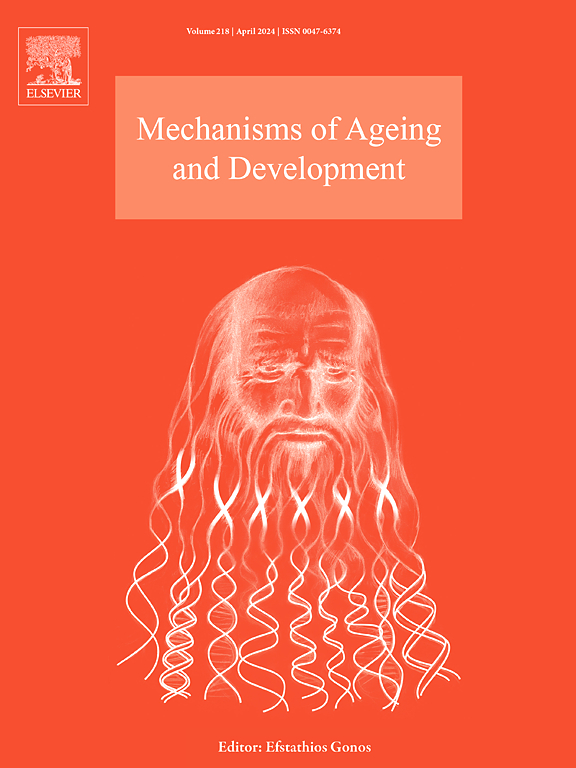Plasma metabolomic profiles reveal sex-specific response to an oral glucose tolerance test in late middle-aged adults
IF 5.1
3区 医学
Q2 CELL BIOLOGY
引用次数: 0
Abstract
Sex is a key determinant of human phenotype, with males and females exhibiting distinct anthropometric and metabolic features that influence disease susceptibility. This study investigated sex-specific metabolic differences in late middle-aged adults without diagnosed metabolic diseases, both in the fasting state and during an oral glucose tolerance test (OGTT). Using data from the NutriTech project, we analyzed plasma metabolomic responses during the OGTT, along with detailed assessments of body composition and fasting clinical parameters. Females exhibited 28 % greater total adipose tissue, mainly subcutaneous, whereas males had more intra-abdominal fat and higher energy expenditure. Females showed elevated fasting levels of fatty acids—particularly very-long-chain fatty acids— leptin, and adiponectin. Males had slightly higher fasting glycemia (∼ 5 %) and a more pronounced glycemic increase during the OGTT (17 %), along with elevated insulin levels. In both fasting and postprandial states, males showed higher circulating levels (p < 0.05) of aromatic and branched-chain amino acids (BCAA) and their catabolites. Conversely, females had higher sphingomyelins levels during fasting and throughout the OGTT, and increased postprandial levels of secondary bile acids (p < 0.05). These sex-specific metabolic features in late middle-aged adults may enhance our understanding of metabolic disease risk and support the development of more targeted prevention strategies.
Clinical trial registration number
NCT01684917
血浆代谢组学分析揭示了中老年成人对口服葡萄糖耐量试验的性别特异性反应
性别是人类表型的关键决定因素,男性和女性表现出影响疾病易感性的不同人体测量学和代谢特征。本研究调查了未诊断出代谢疾病的中老年成年人在空腹状态和口服葡萄糖耐量试验(OGTT)期间的性别特异性代谢差异。利用NutriTech项目的数据,我们分析了OGTT期间的血浆代谢组学反应,以及对身体成分和禁食临床参数的详细评估。女性表现出28% %的总脂肪组织,主要是皮下脂肪,而男性则有更多的腹部脂肪和更高的能量消耗。女性的空腹脂肪酸水平升高,尤其是长链脂肪酸、瘦素和脂联素。男性空腹血糖略高(~ 5 %),OGTT期间血糖升高更明显(17 %),同时胰岛素水平升高。在空腹和餐后状态下,男性的芳香和支链氨基酸(BCAA)及其分解产物的循环水平较高(p <; 0.05)。相反,女性在禁食期间和整个OGTT期间鞘磷脂水平较高,餐后二级胆汁酸水平升高(p <; 0.05)。这些中老年成人的性别特异性代谢特征可能增强我们对代谢性疾病风险的理解,并支持制定更有针对性的预防策略。临床试验注册号:bernct01684917
本文章由计算机程序翻译,如有差异,请以英文原文为准。
求助全文
约1分钟内获得全文
求助全文
来源期刊
CiteScore
11.10
自引率
1.90%
发文量
79
审稿时长
32 days
期刊介绍:
Mechanisms of Ageing and Development is a multidisciplinary journal aimed at revealing the molecular, biochemical and biological mechanisms that underlie the processes of aging and development in various species as well as of age-associated diseases. Emphasis is placed on investigations that delineate the contribution of macromolecular damage and cytotoxicity, genetic programs, epigenetics and genetic instability, mitochondrial function, alterations of metabolism and innovative anti-aging approaches. For all of the mentioned studies it is necessary to address the underlying mechanisms.
Mechanisms of Ageing and Development publishes original research, review and mini-review articles. The journal also publishes Special Issues that focus on emerging research areas. Special issues may include all types of articles following peered review. Proposals should be sent directly to the Editor-in-Chief.

 求助内容:
求助内容: 应助结果提醒方式:
应助结果提醒方式:


